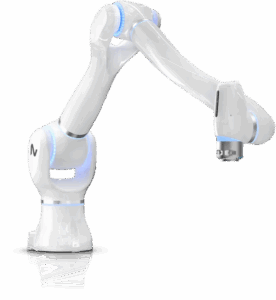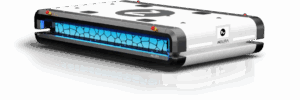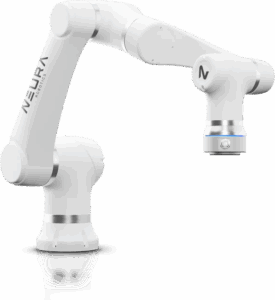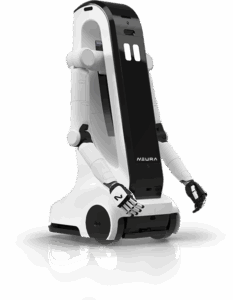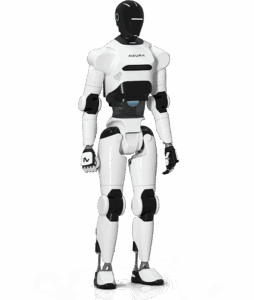Collaborative robots can be an effective solution to labor shortages due to cost-effective operation without sacrificing accuracy or safety. They perform countless repetitive tasks such as lifting, picking, cutting, assembling, and painting. Despite their evident advantages, they lack human-like awareness. For the safety of workers, collaborative robots require fences or barriers, which prevents them from being regarded as a universal solution. For safe interaction with humans in different environments, robots need the ability to perceive and understand their surroundings and cognitive intelligence. This necessity brought the development of the first cognitive robot – cobot for short.
Cognitive robots learn from experiences to improve their performance, interact with humans, and make their own decisions. They are autonomous machines capable of seeing, hearing, speaking, feeling, and even talking to humans. In collaborative workspaces, they can either interact directly with humans or perform dangerous, repetitive tasks with minimal supervision.
Artificial intelligence (AI) and advanced sensors are constantly evolving to help intelligent robots bridge the gap between machines and humans. These advancements, along with relatively new sensor technology, are driving increased demand for smart machines and, in turn, more applications across all industries and households.
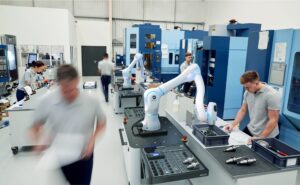
Exceptional technologies of cognitive robots
Environmental Perception
Cognitive robots require special sensors and software to interact with their environment. Cognitive robots can process data simultaneously from multiple sensors through advanced software platforms, ensuring they always operate efficiently and safely. This software also controls the robot’s mechanical and operational systems.
Cobots can perceive and adapt to their environment by seeing, hearing, and feeling while learning new skills. Thanks to artificial intelligence, 3D voice recognition, and smart sensors like safe human recognition, they can recognize faces and objects and learn from their experiences to advance their skill set.
Intuitive and safe interaction
Because cognitive robots can collaborate and interact with humans in shared workspaces without physical barriers or other safety precautions, they use an integrated system that operates through visual, auditory, and physical feedback to recognize humans and prevent danger.
These systems can detect people and objects within the range of the cognitive robot, redundancy, and diversity ensure the robot’s reliability in the event of a failure or malfunction, and the secure and privacy-protecting cybersecurity systems prevent the theft or loss of confidential information.
Understanding complex situations
Hardware and software integration is critical to enable cognitive robots to operate in complex environments with varying motion, noise, and lighting conditions. Not only can they use 3D visual and acoustic sensors, but they can also learn to predict motion and behavior to maximize productivity by combining advanced sensor technologies with AI.
Through these sensors, they can quickly develop a comprehensive understanding of all people and objects in their workspace.
Operating Systems
Much like computers and smartphones, the functions of a cognitive robot depend on an operating system that provides access to settings and actions. In addition, these operating systems allow operators to monitor and adjust fleet productivity for all units in each area. Not only can they add new features and improve efficiency, but they can also add apps, plug-ins, and updates.
Continuous Learning
Learning from experience is the basis of cognitive robots. They understand tasks, recognize patterns, solve problems, and improve their skills over time through a combination of internal sensors, software, and AI. Furthermore, cognitive robots use edge computing systems to improve their internal learning algorithms. An operator can then customize the onboard computing systems according to their needs. Because of this, cognitive robots are now able to assist people in a variety of environments.
High Performance Hardware
Lightweight and strong materials are two key characteristics of cognitive robots that enhance their movement and lifting capabilities while avoiding injury or damage from collisions.
Because of their build, cognitive robots can reach up to 4.5 meters per second, perform tasks with sub-millimeter precision, and carry payloads of up to 30 kg with a range of 3 meters.
Seven degrees of freedom (DOF) make them agile and flexible, allowing users to program specific actions using motion guidance.
Additionally, a cognitive robot with high-quality protection and IP65 ratings can operate in extreme temperatures (high and low), water, dust, chemicals, and humidity. Cobots use encoders to sense movement, convert it into electrical signals, and then send the inputs to internal control systems so the robot can determine its position, velocity, and direction.
User-Friendly Interfaces
A cognitive robot needs a graphical interface that is easy to use, even for people without programming or coding skills. The cognitive robot of today is controlled by an intuitive touch interface found on a tablet or by software installed on a laptop or desktop computer. Through simple menus and drag-and-drop operations, powerful user interfaces provide complete access to the unit’s movements and behaviors. 3D scanning sensors let users visualize the robot and its environment at 360°, with a choice of objects, settings, and motion paths.
Configurability
Optimal productivity requires cognitive robots that can easily be configured and reconfigured to meet the changing needs of their work environment. In addition to manual touch controls, voice recognition, touch skins, and 3D vision, various built-in features help with the device setup. Users can teach cobots to remember objects and motions through gestures, voice, and touch commands. The robot’s operations then depend on sensors and 3D vision.
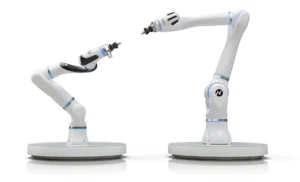
Potential use-cases of cognitive robots
Continuous research and developments ensure cognitive robots can be used in factories, production facilities, and households everywhere. These constant improvements have created limitless possibilities that enhance the collaboration between robots and humans in any given environment.
Some of the use cases include:
- Elderly care: Comprehensive mobility solutions, help in the home, medical care, and companionship for people living alone.
- Retail and supermarkets: Product selection and pickup, checkout service, automated packaging, and transportation.
- Cities and government: Garbage collection, recycling, graffiti removal, gardening, and building maintenance.
- Medical and healthcare: Surgical and dental procedures, medical screenings, rehabilitation, occupational therapy, and patient care.
- Personal Assistants: Household organization and automation, cooking, cleaning, and gardening.
- Vehicles and electric vehicle charging: vehicle inspections, cleaning, repairs, and automatic vehicle charging.
Cognitive robots have the potential to move beyond this list to applications that still haven’t been thought of, thanks to their open-ended research, improvements, and possibilities. An endless, smart collaboration with cognitive robots can solve some of the greatest everyday challenges humanity faces.
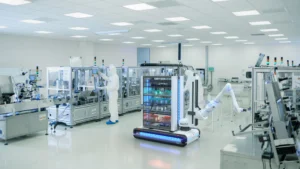
Get to know MAiRA, the first cognitive robot HERE.
Download our whitepaper about cognitive robots HERE.

